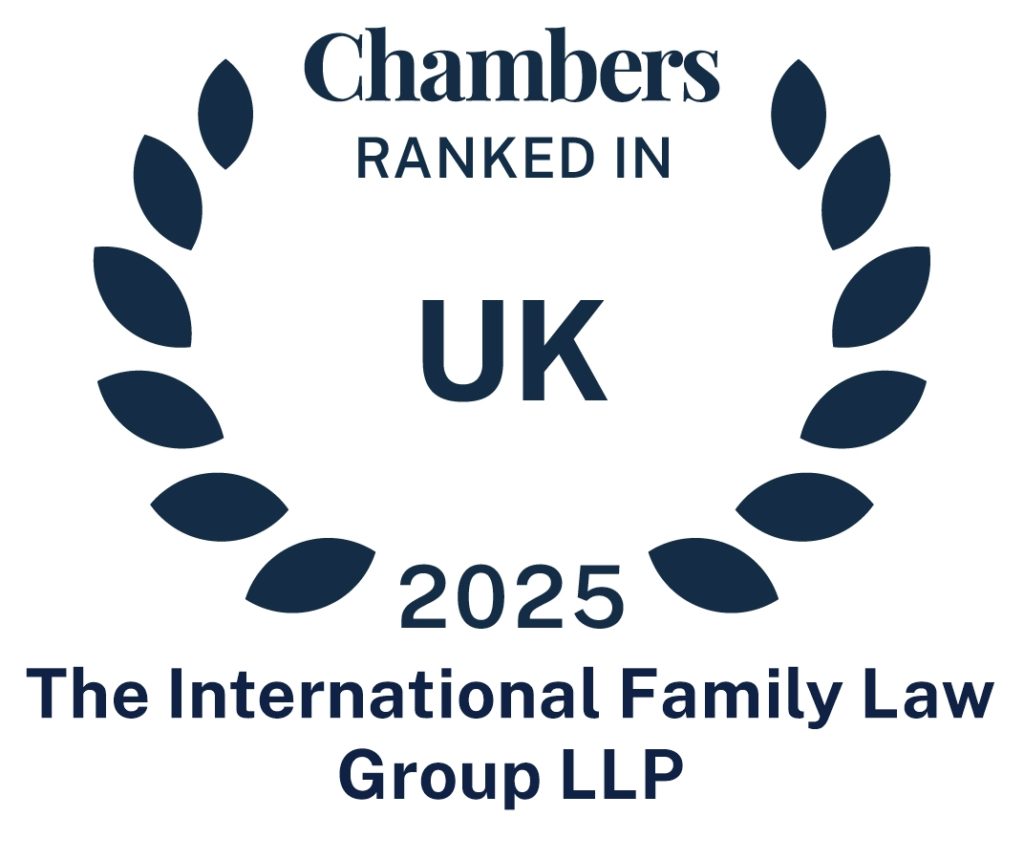On 30 January 2023, a 12-month pilot scheme, designed to increase transparency in the family justice system began in three Courts in England and Wales (Carlisle, Leeds, and Cardiff). If successful, the approach adopted by the pilot scheme will be extended to all courts in England and Wales.
Background
For many years there have been allegations by the press and the public of “secret justice” taking place in our family courts. This has led to trust in the decisions made by English family law judges being undermined.
Those of us who work in family law know the scrutiny applied by judges to highly sensitive family law matters. However, whilst the current system enables the reporting of final decisions, the reporter’s knowledge of the careful analytical process and evidence given to support the judge’s final decision is extremely limited. Advocates for making the court process more transparent say this leads to less accurate reporting.
The President of the Family Division, Sir Andrew McFarlane shares this view, particularly where judges work very hard to provide justice for families. He maintains professional journalists working responsibly with family law practitioners and judges will help dispel public misconceptions about how justice works in the family courts.
Sir Andrew Macfarlane has therefore decided to tackle this controversial issue head-on believing a more open family justice system is essential. The Pilot Scheme is part of the process Sir Andrew Macfarlane envisaged when he published his report on 28 October 2021 describes the issue as one of “Confidence v Confidentiality”. [1]
Despite an acknowledged need for more transparency, there remains united support for protecting the identity of any children involved in proceedings. This is a well-established principle in English family legislation [2] and the press must still adhere to strict reporting restrictions about publishing the names of the children or identifying their schools.
Balancing Competing Rights
Whilst many family judges and practitioners endorse the principle of increased transparency in family courts, the practicalities of implementation remain of concern. Others feel protecting the privacy of families should be paramount and family proceedings should be treated in the same way as other civil proceedings. (There is debate whether existing legislation even enables the family courts to exclude the press where there are no children involved).
Most clients feel uncomfortable about the possibility their most private issues might appear in the press. There is also a fear that some members of the press may focus on the more dramatic or salacious facts within a of family’s breakdown, rather than the legal arguments behind the judgements made.
It is acknowledged that some judgements or press reports will sometimes unintentionally reveal the identities of the adults and hence possibly the children involved.
It is incredibly difficult to fully anonymise a judgement or press report. (In Australia, their courts have a specialised anonymisation department).
In any situation where the press seeks to attend a hearing it will remain necessary for the judge to balance the competing rights of the individuals and third parties involved, including those contained in the European Convention on Human Rights ‘ECHR’ and the UN Convention on Rights of a Child ‘UNCRC’:
- Respect for family life of children and their parents (ECHR Art 8)
- The right for a child to be heard (UNCRC Art 12)
- Freedom of Expression (ECHR Art 10)
- The right to a fair trial (Art 6 ECHR)
The Pilot Scheme
What’s being introduced into the Pilot:
- An altered presumption that the press and legal bloggers will be able to attend court unless the judge is provided with a very good reason not to do so
- Encouragement for journalists and media lawyers to attend court
- Greater support from courts to authorise more documents to made available to journalists. (These might include skeleton arguments, position statements and indices to court bundles)
- Journalists being able to report on what they witness in court and not limited to citing information contained in a formal court reported judgement
- The introduction of a precedent Transparency Order which is likely to be considered at the start of a hearing [3]
- A discouragement by judges to use their discretion too frequently to refuse admission of authorised journalists into their court proceedings
- Monitoring of the journalists reports of pilot cases by the Family Court Transparency Implementation Group (TIG) [4]
Whilst this pilot applies to children law proceedings, both public (proceedings brought by Local Authorities) and private (proceedings brought by individuals); it is widely anticipated there will be a at least an equal relaxation on reporting restrictions in financial remedy proceedings in England & Wales; particularly where no children are referenced in the proceedings. It is therefore thought likely adult participants in proceedings may no longer be afforded the right to anonymity. A recent case dealing with reporting restrictions supports this view. [5]
On 11 February 2022 the President announced the formation of a transparency project, subgroup:
“To consider all aspects of Transparency as far as it concerns the work of the Financial Remedies Court and to report as to suggested ways forward.”
The areas to be covered will include, but are not limited to, the following:
- Should FRC cases be heard in Private or in Open Court?
- Should the parties remain (sic) anonymous?
- What documents, if any, should be made available to the press/legal bloggers?
- How should highly confidential information (including that which is commercially sensitive) be considered?
- Contents of published judgments
- How to ensure a greater number of judgments in cases involving a lower level of assets, which are generally heard by the District Bench can be published [6]
This report is expected to be issued in February 2023.
There has been a timely judgement, handed down days before the launch of the pilot scheme [7] which clearly states seeking to rely on a defence that reporting would be upsetting for the adults involved, will not be a good enough reason to decline entry of the press into a court room.
Sir Andrew Macfarlane has published ‘The Transparency Reporting Pilot – Guidance from the President of the Family Division’. [8]
The Transparency Project has also published guidance. [9]
Alternatives to Court
There are other routes to justice for private children or financial matters which can protect privacy; provided those involved agree to cooperate with such an approach.
Arbitration is a tool which can be used for private children or financial matters and the same test for challenging children decisions applies whether made through arbitration or at Court by appeal.[10]
Other methods of dispute resolution include:
- Early neutral evaluation (where an experienced solicitor, barrister or retired judge provides an indication of what they would order if they were hearing the matter in court)
- Mediation (a voluntary process which encourages settlement)
- Solicitor correspondence
- Round table meetings with clients, their lawyers and sometimes other specialists
These methods of resolving family cases are all held privately, in surroundings which are more convivial to settlement and are often resolved sooner.
Conclusion
There is a real shift in opinion amongst many family judges towards allowing journalists greater access to our courts to seek to regain the trust of the public.
Some judges are also questioning whether there might never have been a right for those participating in family proceedings (which do not involve children) to retain anonymity. Participants in Civil proceedings are not afforded such privacy.
However, most clients would say a family’s right to privacy is different to that of a commercial transaction.
It is almost inevitable that families who wish to remain anonymous and have the funds to do so, will opt for alternative ways of resolving their family law disputes.
It will be seen whether the pilot scheme produces the positive reporting envisaged about decisions making in the family court. With tight safeguards for children and effective monitoring of reporting, it might well do so.
Lucy Greenwood
[email protected]
The International Family Law Group LLP
www.iflg.uk.com
© February 2023
Citations
[1] ‘Confidence and Confidentiality: Transparency in the Family Courts’, by Sir Andrew Macfarlane 28 October 2021
[2] Administration of Justice Act 1960 s 12
Children Act 1989
Adoption Act
[3] Draft Transparency Order
[4] Family Court Transparency Implementation Group – First Progress Report
[5] Gallagher v Gallagher (No. 1) (Reporting Restrictions) [2022] EWFC 52
[6] Financial Remedies Journal 09.01.2023
[7] BR & Others (Transparency Order: Finding of Fact Hearing [2023] EWFC 9 para 42
[8] The Transparency Reporting Pilot – Guidance from the President of the Family Division
[9] The Transparency Project ‘What to do when a reporter attends (or wants to attend your hearing)’
[10] G v G [2022] EWFC 151
Haley v Haley [2020] EWCA Civ 1369
A v A [2021] EWHC 1989 guidance
- Lucy Greenwoodhttps://iflg.uk.com/team/lucy-greenwood
- Lucy Greenwoodhttps://iflg.uk.com/team/lucy-greenwood
- Lucy Greenwoodhttps://iflg.uk.com/team/lucy-greenwood
- Lucy Greenwoodhttps://iflg.uk.com/team/lucy-greenwood











